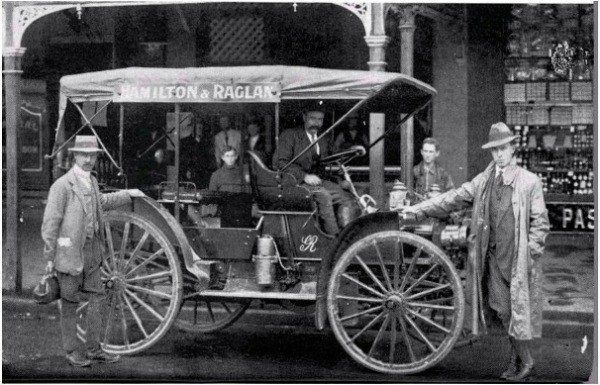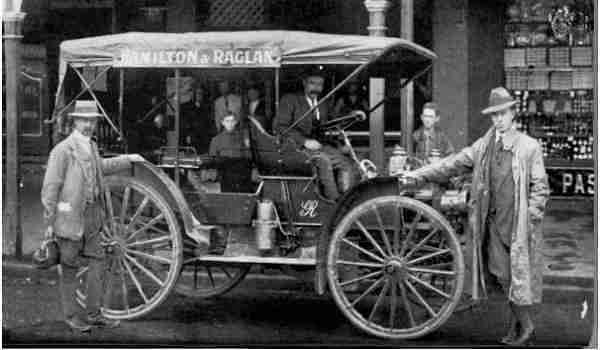By John Lawson
Looking back at Whaingaroa a century ago in 1916, it was two years into World War 1, and in other ways it was becoming less isolated from the outside world than it had been.
The Great War had been expected to be over by Christmas and few were volunteering, so conscription was introduced for the first time since the 1860s New Zealand wars. It seems Raglan County was a bad place to be for single men who didn’t volunteer. Before war broke out Council had decided conscientious objectors should be put on a yard and a-half of stone-breaking a day, in 1915 they decided no single men eligible to fight should be employed by them and that married men should be paid 2s a day more than single. Maybe that left them short of labour, for by 1918 they were urging the Minister to force exempted First Division reservists to do road work, “owing to the shortage of labour in country districts.”
As well as some being forced to travel to the other side of the world, travel was getting easier for those remaining. The deviation had been started in 1907 and a 1914 loan funded its metalling. The 1916 Public Works Estimates planned improvements to 14 roads in the area, but the Minister warned funds might dry up as, “The Dominion was in the abnormal position that every shilling would be wanted for war purposes.”
Other work was also being done. Te Mata Telephone Association decided to erect at least the first mile of line from the post office. Council voted £15 towards completing the seawall on the foreshore and repairs were made to the stone jetty and the long wharf. The 1916 census showed that Raglan Town had almost doubled its population to 217, from 114 in 1901; maybe due to the public works and easier access?
Despite all this, a Taranaki Daily News article described Raglan, “as primitive and as backward as it was 30 years ago. It has a small but happy population to whom the active concerns or interests of active life mean next to nothing. But withal there is the happiness of an unruffled content—quite the atmosphere for a man who is not troubled with worldly desires or ambitions and wishes to enjoy the calm of a peaceful but unaspiring life.” That was backed up by reports in several papers that Mrs Mary Jerome had, in 57 years of living at Te Mata, not journeyed further than Raglan. She visited Hamilton in 1916.

The articles don’t mention how she travelled. This photograph of Bob Aitken in ‘Puffing Billy’ at Hamilton is annotated as taken about 1916, though Bob still described himself in adverts as ‘coach proprietor’. N. D. Robertson said the International Harvester was bought in 1915. They were built from 1909. N. D. came to Raglan in 1915, bought Rutherford’s Flax Cove home in 1916 and started Robertsons’ Motor Transport in 1917. A 1915 guidebook said it took 3 hours to drive from Raglan to Hamilton.
When the first resident Anglican minister, Rev C.B.W. Seton, came in 1916, he toured his large parish, extending to Waingaro and Kawhia, on horseback. Presumably he was a customer of Frank Crawford, who also came in 1916, bought a section adjoining the bakery (now The Depot) and set up as a saddler. Horse and cart was still the way to move timber from Te Uku landing to the Vanhoutte’s new house when they moved down from the Plateau. Dr Sanders returned to Raglan in 1916, but rode to his patients until about 1919.
Although Hamilton got electricity in 1916 and Frankton three years earlier, Raglan still had another two decades of oil and candles. Another 1916 arrival was W. J. Lusty, who bought 500 acres at Te Uku, where he set up his own hydro-power a decade later.
Although nothing momentous happened in Raglan in 1916, as the mid-point in the war, it can probably be reflected on as an important year in setting the course to change in the next decade and beyond.

